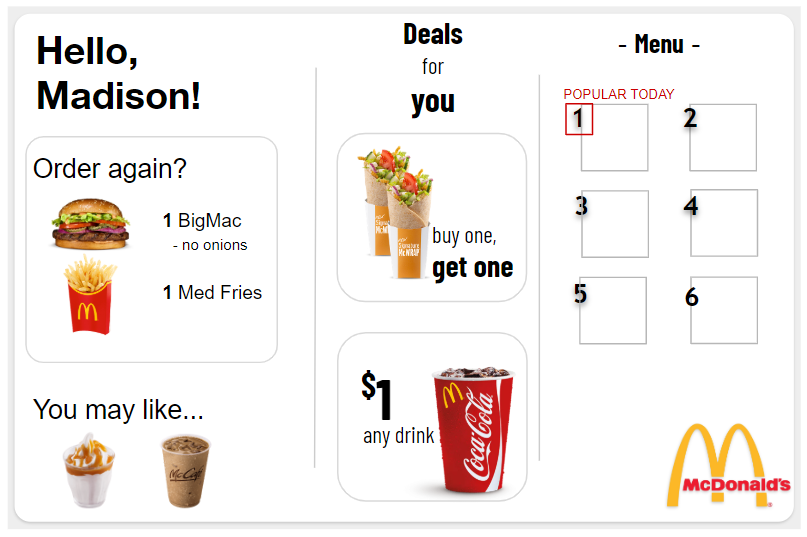Over the past week, we've all been hearing a lot about…
Today’s strategic marketing departments are looking to do more with the data that’s available to them. But for anyone who has started down this journey, you soon realize that having a lot of data doesn’t automatically translate into having a lot of actionable information.
One technique to consider is leaning on machine learning technology to pull out some of that actionable information. That idea might have already crossed your mind; in fact, a joint study by Google and MIT found that 74% of the marketers surveyed believe their organization’s current goals would be better achieved with greater investment in machine learning and automation.
So what are some ways machine learning has helped forward-thinking companies deliver an impactful customer experience, and how can it tactfully help marketers do more with their data?
Personalized Content
Tech corporations like Amazon and Google have been using machine learning for a long time, and the results have elevated them to a level of success the world has never seen before. But machine learning is no longer just for large tech companies. Marketers are understanding that machine learning can be a secret weapon in delivering a personalized customer experience, and that means the gates are wide open for who should be leveraging this type of technology.
McDonald’s in 2019 paid $300 million to acquire an artificial intelligence startup to begin trying its hand at personalizing every step of the customer journey. As its CEO at the time of the acquisition, Steve Eastbrook put it this way: “How do you transition from mass marketing to mass personalization? To do that, you’ve really got to unlock the data within that ecosystem in a way that’s useful to a customer.”
One of McDonald’s first ideas to unlock and leverage this data is to personalize a restaurant’s digital drive-through menu boards, based on the customer’s previous orders and preferences. Recommending relevant up-sell items or deals can drive up the revenue per transaction, all while simplifying and speeding up the customer’s ordering process.

This acquisition also moves McDonald’s forward in being able to deliver personalized experiences through all of its digital channels, including its in-store kiosks and mobile app. All of these interactions can now become extremely relevant to the customer, while increasing sales and cutting waste for McDonald’s — win-win.
Execute A/B Testing
Gartner in 2011 predicted that 85% of a customer’s relationship with a business will be managed without human interaction by 2020. As marketers, we must develop hands-off ways to learn from how our brand is resonating with our customers and be agile enough to optimize our strategies and change course when necessary. Historically we’ve tried to do this through A/B testing; however, machine learning can take routine A/B testing to the next level. Just look at what Netflix does.
Netflix has a goal of keeping our attention for as long as possible. You can try to blame it on quarantine, but there is no denying that it is pretty good at it. One way Netflix utilizes machine learning is through the selection of the thumbnail image it uses to promote a particular show. You were probably already aware that the shows suggested to you are unique compared to other users, but it goes further than that.
A typical 1-hour Netflix episode consists of roughly 86,000 still video frames. Netflix has decided that those are 86,000 potential thumbnails that could capture a user’s attention, and it uses machine learning to analyze the metadata behind each of those images to identify the best ones to use as thumbnails on users’ screens.
But it also uses machine learning and A/B testing to determine which of the best identified thumbnails would resonate most with you. Are you more of a comedy fan? The image chosen will depict a lighter part of the show, perhaps with the main characters smiling or laughing. If you are more into thrillers the image might look more suspenseful. You’ll notice that even your individual thumbnails will change over time, all in an attempt to get you to click and watch.

Source: Become Human
Optimize Ad Spend
The customer journey is more varied than ever before. Customers have more channels to interact through, they use more devices and their expectations for a seamless and connected experience have never been greater. All of these interactions, across all of their devices, produce data — and machine learning can help us understand this data and make sound decisions based on it.
Google’s research has found that the efforts put forth by marketers into thoughtful ads and content does make a difference — 91% of smartphone owners buy or plan to buy something after seeing an ad they described as relevant. But how do we make sure we are attributing the sale to the appropriate ad, since customers probably have had the opportunity to interact with many ads by the time they purchase? And how can we make sure that we are strategically placing our ads in front of the right customers at the right time?
The algorithms behind machine learning can allow for data-driven attribution models to be established, instead of simply giving credit to the last ad a customer clicked on. Through the analysis of click paths and time on sites, you can see which ads led to the most valuable customer interactions.
Machine learning is also the brain behind many automated bidding tools used at search auctions. Machine learning models are able to consider a large number of factors specific to your goals and budgets when considering which ads to place, allowing you to be more specific and targeted in your approach.
Getting Started
If you have been interested in how to use machine learning in marketing and sales but aren’t sure where to start, a great first step can be to define a use case or tactic that would be impactful for your department or organization. Zirobi, a technology data and insights company established by Zirous and marketing research and strategy firm OBI Creative, is here to help. We have a process to help you figure out what that use case is and execute a quick machine learning project that delivers value. Check out the Zirobi Spark engagement if you’d like to have a conversation with some of our data science and machine learning experts.
We speak the language of business and technology to create customer-centric organizations. Contact us today to learn more.




This Post Has 0 Comments